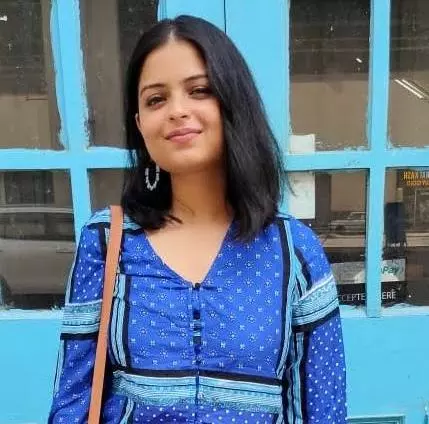Scope of Article 136 Includes Reappreciation of Evidence in Cases of Manifest Misreading: Supreme Court Aquits 11 Accused in Triple Murder Case
The Court said that the Trial Court and the High Court had misread critical portions of the evidence and ignored vital deficiencies in the prosecution's case.

Justice Abhay S. Oka, Justice Ujjal Bhuyan, Supreme Court
The Supreme Court has held that it can reappreciate evidence in a criminal appeal under Article 136 of the Constitution when the lower courts have manifestly misread material evidence.
A Bench of Justice Abhay S. Oka and Justice Ujjal Bhuyan observed, “In appropriate cases, this Court can interfere with the concurrent findings of the Courts when the assessment of evidence is vitiated by misreading of the evidence. However, this should be done in rare and exceptional cases of manifest illegality.”
The Court added, “None of these decisions prevent this Court from reappreciating evidence in a criminal appeal arising out of Article 136 of the Constitution against an order of conviction. Without appreciating the evidence, this Court cannot decide whether the case is within the parameters laid down in the aforesaid decisions… In this case, the analysis of the evidence of material witnesses made by us shows that the Trial Court and High Court have misread the evidence of these material prosecution witnesses. Very striking features of the prosecution’s case and evidence have been ignored by the Courts.”
Senior Advocate Basant R. appeared for the Appellants, while Senior Additional Advocate General Amit Anand Tiwari represented the Respondent.
Brief Facts
The case arose out of a triple murder that took place in November 2012. The Respondents alleged that the incident was politically motivated following the panchayat elections in which the wife of PW-1 had defeated the wife of Accused No. 1.
According to the Respondents, a group of accused persons intercepted a Scorpio car using a lorry, forcibly opened the doors of the vehicle, attacked the passengers with aruvals and wooden logs, and attempted to set the car on fire. The victims included the brother, son, and driver of PW-1. PW-9, the daughter of PW-1 and a minor at the time, was seriously injured in the attack.
The Trial Court convicted Accused Nos. 1 to 11 and sentenced them to life imprisonment. The Madras High Court confirmed the conviction of the Accused Nos. 1 to 11 for the offences punishable under Sections 302 and 307 read with Section 149 of the Indian Penal Code, 1860 (IPC), and Section 3(1) of the Tamil Nadu Prevention of Damage to Public Property Act.
Reasoning of the Court
The Supreme Court examined the reliability of the evidence given by the three prosecution witnesses.
Regarding PW-1, the Court observed, “PW-1 (Krishnan) has obviously exaggerated the incident due to their political rivalry. It is obvious that he was unsure about the number of accused who were present at the time of the incident… Therefore, the evidence of PW-1 does not inspire confidence.”
On PW-2, who came forward after 43 days, the Court remarked, “Considering the conduct of the witness of remaining silent for a long period of one and a half months, the testimony of this witness cannot be believed… Moreover, he stated that one Abdul Rehman was an eye-witness. However, the prosecution failed to examine him. Therefore, adverse inference will have to be drawn against the prosecution.”
The Court further held that the Trial Court failed to comply with the mandatory requirement of a preliminary examination before recording the evidence of the minor witness PW-9. It stated, “Not asking preliminary questions to the minor witness makes her evidence very vulnerable… Since the condition precedent for recording of statement of PW-9 (Nikila) for evidence has not been satisfied, her testimony has to be kept out of consideration.”
With regard to fingerprint evidence, the Court noted serious lapses in procedure. It held, “No Mahazar was drawn at the time of taking photographs of the fingerprints allegedly appearing on the Scorpio car. Moreover, the photographs taken were not exhibited. The failure of the prosecution to draw a Mahazar or Panchnama at the time of taking photographs of the fingerprints on the car goes to the root of the matter.”
The Bench rejected the reliability of the recovery evidence, stating, “Only on the basis of recovery, by no stretch of imagination can the accused be convicted.”
The Court also addressed the argument that it should not interfere under Article 136 of the Constitution when concurrent findings of fact have been made. It clarified, “None of these decisions prevent this Court from reappreciating evidence in a criminal appeal arising out of Article 136 of the Constitution against an order of conviction… These decisions only lay down the self-imposed constraints on interference with the concurrent findings of the fact recorded by the Trial Court and the High Court.”
The Court further observed, “The analysis of the evidence of material witnesses made by us shows that the Trial Court and High Court have misread the evidence of these material prosecution witnesses. Very striking features of the prosecution’s case and evidence have been ignored by the Courts.”
Consequently, the Court allowed the appeals, setting aside the impugned judgments and acquitting the accused persons.
Cause Title: Agniraj & Ors. v. State through Deputy Superintendent of Police, CB-CID (Neutral Citation: 2025 INSC 774)
Appearance:
Appellants: Senior Advocates Basant R, Siddharth Agarwal; AOR Rajeev Maheshwaranand Roy, Gunjan Kumar; Advocates Manu Krishnan, Raunak Arora, P Srinivasan
Respondent: Senior AAG Amit Anand Tiwari; AOR Sabarish Subramanian, Advocates Devyani Gupta, Vishnu Unnikrishnan, Tanvi Anand, Saushria Havelia, Jahnavi Taneja, Pranjal Mishra, Danish Saifi, Vishal Tyagi


